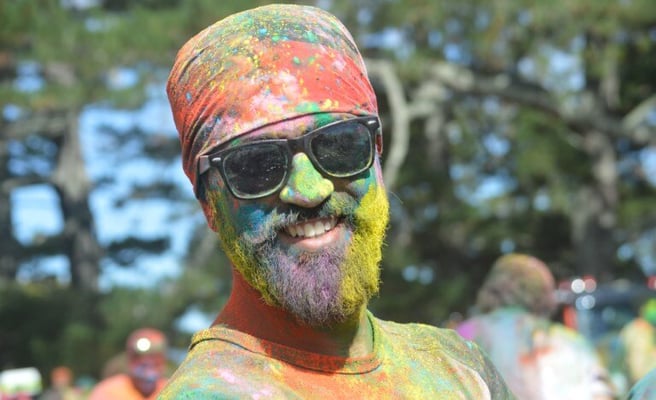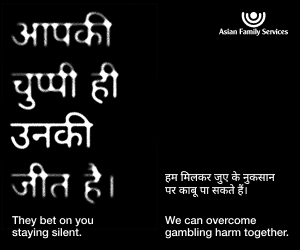CULTURE QUOTIENT: A modern take on Indian culture

Two decades ago, Holi was unknown to Aucklanders with one or two temples observing it as a religious function. Holi today has gone global, and every major city in the world where Indians live ends up celebrating Holi. An obvious downside is when Hindu festivals go global, they tend to get secularised, and their cultural depths and nuances are dusted off. What remains is a shallow synthetic version of the original and losing all its charm, meaning and purpose.
On a positive note, whatever Indians celebrate eventually goes global appealing to all open-minded communities. Last week’s Holi celebration by ISKCON Auckland was a typical example of how culture can be meaningful and fun cutting across all groups. Expect another fun filled Holi to follow this weekend at Three Kings too. Thanks to Bharatiya Samaj, Humm FM and others.
The deep Hindu tradition has given us the festival of Holi weaving the divine into the very nature that we are part of. Essentially Holi is not just about colours but colours in nature. The timing of Holi is around spring (Vasant) and hence called ‘Vasant Mahotsav’, and the colours we smear represent the colours that spring projects. Shri Swami Tejomayananda of Chinmaya Mission puts it succinctly, “Holi is wonderful because it reflects exactly what is occurring in nature at that time – when all the beautiful flowers of different colours are blossoming. By celebrating this event, we feel a greater oneness with nature. The dominant idea behind this festival is that we should live more in harmony with nature instead of trying to destroy her and make her our slave”. That makes Holi a natural colour therapy for the mind.
Like all Indian festivals, the religious side of the Holy festival has important messages to rejuvenate the mundane mind and lift it with insight and a sense of inter-being with nature and the life forms around us. There are plenty of authentic references to this most colourful festival of Holi in the Indian sacred literature be it the Jaimini’s famous Purvamimamsa Sutras, the KathakaGruhya sutra, Harsha’s Ratnavali, Dandi’sDashakumarCharit of Dandi or even the Garuda Purana where we come across some delightful descriptions of the Holi festival. A myriad of artwork from ancient India has portrayed Holi in colourful ways including an antiquated stone inscription some 2300 years old from Ramgarh in the province of Vindhya has mention of ‘Holikotsav’ on it. Adding to that is the world famous sixteenth-century temple of Hampi, which was the capital of great Vijayanagara kingdom has a panel showing a playful scene of Holi.
The popular ritual of Holikadahan, meaning the burning of Holika (the sister of the power crazy king HiranyaKashipu) is a reminder of the deep devotion of the Vishnu devotee Prahlad when Holika carries the child into the fire to kill him, only to get killed herself. The story is more significant today than ever before as the ignorant who harbour ‘asuric’ tendencies get consumed in the fire of worldliness, but the person with spiritual insight like Prahlad comes out unscathed. Many attribute Holika as a ‘demoness’ which is a poor translation for the term ‘asur’. The term ‘rakshasa’ is also used synonymously. These terms are out of fashion, but a glimpse into its meaning helps us discover such tendencies within us and around us. To put it bluntly, rakshasas are people with a 'passionate nature' with extreme ambition and restless in their temperament and activity. Rakshasa type people easily relate to power, want to be around powerful people and eventually seek power. Asuras, on the other hand, are anti-divine and consider themselves as the centre of the universe. A Ravana was a Rakshasa, but a Hiranyakashipu was an asura.
The stories from the Puranas have themes that resonate easily in today’s modern age. To call it mythology is idiotic that reflects gross ignorance and an unreflective frame of mind. Holy like all Hindu festivals are not about a victory of the good over evil as there is no such thing as evil except gross ignorance that breeds the harm.
Here are some quick facts about Holi:
- Holi is an ancient Hindu festival referenced in the Indian religious scriptures.
- Holi is the most colorful festival in the world, reflecting the colours of nature and the colours of devotion.
- Holi is celebrated at spring time when nature is in full bloom and ready for a spring harvest.
- Holi features in ancient temples, paintings, inscriptions and royal murals throughout India.
- Holi is celebrated over three days in most of the states of India starting from the day of Holi poornima.
Ram Lingam blogs his insights on India and Indian culture at www.indiasutra.co.nz
Two decades ago, Holi was unknown to Aucklanders with one or two temples observing it as a religious function. Holi today has gone global, and every major city in the world where Indians live ends up celebrating Holi. An obvious downside is when Hindu festivals go global, they tend to get...
Two decades ago, Holi was unknown to Aucklanders with one or two temples observing it as a religious function. Holi today has gone global, and every major city in the world where Indians live ends up celebrating Holi. An obvious downside is when Hindu festivals go global, they tend to get secularised, and their cultural depths and nuances are dusted off. What remains is a shallow synthetic version of the original and losing all its charm, meaning and purpose.
On a positive note, whatever Indians celebrate eventually goes global appealing to all open-minded communities. Last week’s Holi celebration by ISKCON Auckland was a typical example of how culture can be meaningful and fun cutting across all groups. Expect another fun filled Holi to follow this weekend at Three Kings too. Thanks to Bharatiya Samaj, Humm FM and others.
The deep Hindu tradition has given us the festival of Holi weaving the divine into the very nature that we are part of. Essentially Holi is not just about colours but colours in nature. The timing of Holi is around spring (Vasant) and hence called ‘Vasant Mahotsav’, and the colours we smear represent the colours that spring projects. Shri Swami Tejomayananda of Chinmaya Mission puts it succinctly, “Holi is wonderful because it reflects exactly what is occurring in nature at that time – when all the beautiful flowers of different colours are blossoming. By celebrating this event, we feel a greater oneness with nature. The dominant idea behind this festival is that we should live more in harmony with nature instead of trying to destroy her and make her our slave”. That makes Holi a natural colour therapy for the mind.
Like all Indian festivals, the religious side of the Holy festival has important messages to rejuvenate the mundane mind and lift it with insight and a sense of inter-being with nature and the life forms around us. There are plenty of authentic references to this most colourful festival of Holi in the Indian sacred literature be it the Jaimini’s famous Purvamimamsa Sutras, the KathakaGruhya sutra, Harsha’s Ratnavali, Dandi’sDashakumarCharit of Dandi or even the Garuda Purana where we come across some delightful descriptions of the Holi festival. A myriad of artwork from ancient India has portrayed Holi in colourful ways including an antiquated stone inscription some 2300 years old from Ramgarh in the province of Vindhya has mention of ‘Holikotsav’ on it. Adding to that is the world famous sixteenth-century temple of Hampi, which was the capital of great Vijayanagara kingdom has a panel showing a playful scene of Holi.
The popular ritual of Holikadahan, meaning the burning of Holika (the sister of the power crazy king HiranyaKashipu) is a reminder of the deep devotion of the Vishnu devotee Prahlad when Holika carries the child into the fire to kill him, only to get killed herself. The story is more significant today than ever before as the ignorant who harbour ‘asuric’ tendencies get consumed in the fire of worldliness, but the person with spiritual insight like Prahlad comes out unscathed. Many attribute Holika as a ‘demoness’ which is a poor translation for the term ‘asur’. The term ‘rakshasa’ is also used synonymously. These terms are out of fashion, but a glimpse into its meaning helps us discover such tendencies within us and around us. To put it bluntly, rakshasas are people with a 'passionate nature' with extreme ambition and restless in their temperament and activity. Rakshasa type people easily relate to power, want to be around powerful people and eventually seek power. Asuras, on the other hand, are anti-divine and consider themselves as the centre of the universe. A Ravana was a Rakshasa, but a Hiranyakashipu was an asura.
The stories from the Puranas have themes that resonate easily in today’s modern age. To call it mythology is idiotic that reflects gross ignorance and an unreflective frame of mind. Holy like all Hindu festivals are not about a victory of the good over evil as there is no such thing as evil except gross ignorance that breeds the harm.
Here are some quick facts about Holi:
- Holi is an ancient Hindu festival referenced in the Indian religious scriptures.
- Holi is the most colorful festival in the world, reflecting the colours of nature and the colours of devotion.
- Holi is celebrated at spring time when nature is in full bloom and ready for a spring harvest.
- Holi features in ancient temples, paintings, inscriptions and royal murals throughout India.
- Holi is celebrated over three days in most of the states of India starting from the day of Holi poornima.
Ram Lingam blogs his insights on India and Indian culture at www.indiasutra.co.nz









Leave a Comment